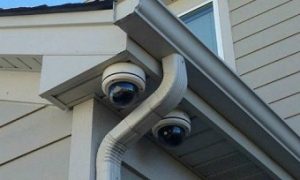
False alarms are a major problem plaguing the intrusion alarm and remote monitoring services industry. Between 90% and 95% of alarms reported to the central monitoring stations turn out to be false.
These false reports cost service providers, as they must send out a response team to verify each and every alarm. It also strains local police resources unnecessarily and could even increase the financial burden on end users, depending on local alarm response regulations and potential fines. Video verification solves these issues, offering an undisputed remote confirmation of the nature of the alarm in the shortest possible time, which helps speed the operator’s response process. Video images can be transferred in real time to the operator, so it can be assessed almost immediately, and so a response team or police forces can be sent with a much shorter delay.
The popularity of video verification solutions is boosted by the influence from the DIY security market, smart home market and consumer video market, as follows:
• DIY: Consumer video cameras are typically high-resolution IP cameras and allow users to check on their home and review footage of past events at their convenience. All this can be done through a dedicated intruder alarm mobile phone application, which adds to the peace of mind.
• Smart home: Smart home/building automation systems are becoming more popular with end users in all sectors. Cameras are usually advertised alongside smart plugs or smart lights, which gives users an extra level of control over what is happening in the house. Some cameras also offer smoke detection features, to support traditional smoke detectors, while providing surveillance of self-monitoring and verification to users. With alarm monitoring stations increasingly offering smart home monitoring services, the video verification market will receive a boost from this side of the industry.
• Consumer video: The number of consumer video devices available on the market is growing rapidly, providing a much broader choice of solutions at various price points. End users can add an IP camera to their home systems and enjoy low-cost self-monitoring and self-verification functionality.
Many central monitoring stations now offer video verification for an extra fee added to their basic monitoring services. Adding video verification to the monitoring package reduces the likelihood the subscriber will cancel their contract or choose another provider offering more comprehensive services. Video verification can also benefit installers and dealers that want to offer a broader range of services to their customers. Cloud hosting and support for video self-monitoring delivers greater value to end users.
Installers may also find themselves closer to their customers than some remote monitoring companies, which makes it easier to increase customer awareness about new offerings. In any case, partnerships between installers and remote monitoring stations can increase revenue per user and provide a more stable annual income. Subscriptions generated by installers could offset normal attrition rates experienced by remote monitoring companies.
Barriers to Broad Adoption
The main barriers to broad adoption of video verification are the following:
• Cost: Even though the benefits of including video verification with intruder alarm systems are clear, many end users – particularly those in the residential sector – may struggle to afford video devices. Passive infrared (PIR) camera detectors can be three times more expensive than non-video-based PIR detectors.
• Privacy and cybersecurity: Residential users’ concern about privacy of video verification and video cameras is high. The main worry is that a hacker will use the device to watch and listen to the private lives of residents. There have been media reports of attackers successfully compromising consumer video IP cameras, and these kinds of reports can delay the decision to buy these kinds of devices. Another concern is that alarm-monitoring operators could be watching residents in their homes, outside of the authorized time. Providers of video verification solutions must make sure their systems are designed with privacy protections built into the system set-up, giving the user the ability to restrict access to video devices, whenever they want to.
• Self-monitoring: Increasing availability of consumer video devices, and DIY security systems that incorporate video products into the offering, have led to the emergence self-monitoring and self-video verification. Such systems usually come pre-configured to handle video files, which makes adding a consumer video camera much easier and lowers the barriers to adoption related to the complexity of the system set up











